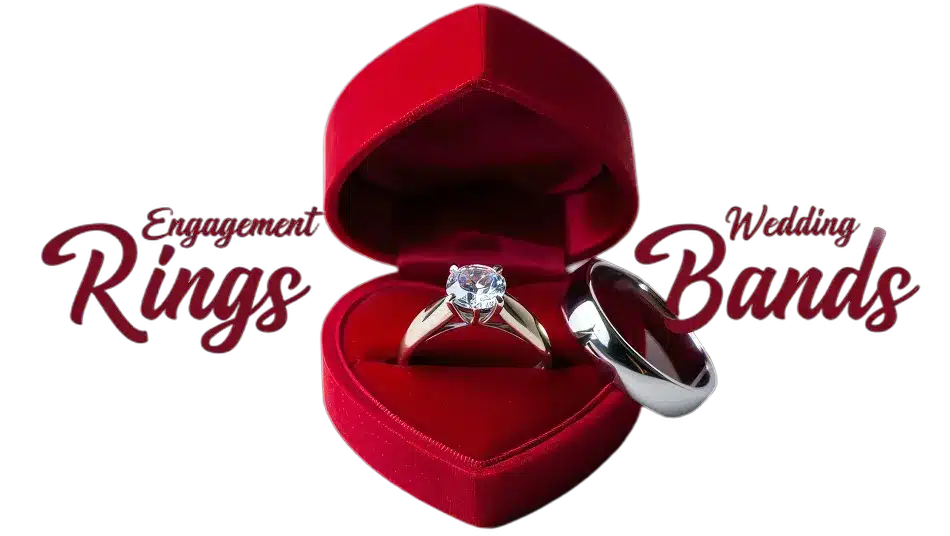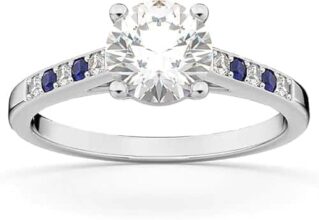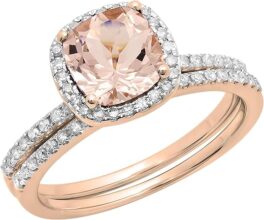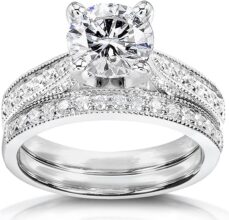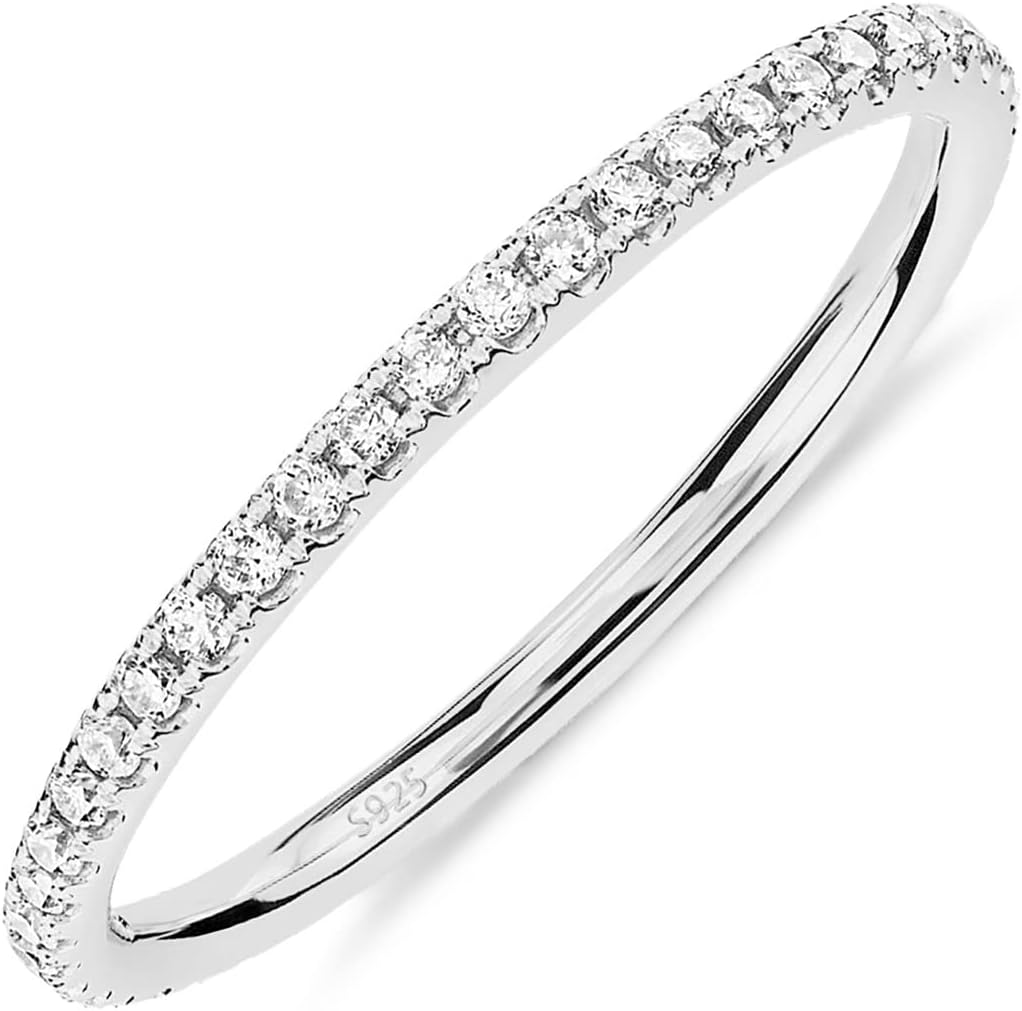
Introduction to White Gold Engagement Rings
When it comes to choosing an engagement ring, you want something that stands out and symbolizes your unique love story. White gold has become a popular choice, melding elegance with timelessness. But what exactly is white gold, and why might it be the right fit for you?
In this article, you will explore the allure of white gold as a top contender for engagement rings. You’ll discover its features, including its durability and stunning shine, which can make it an ideal choice for your special piece.
However, it’s not just about the positives. We’ll also dive into the downsides of white gold, ensuring you have a well-rounded perspective. By the end, you’ll be equipped to make an informed decision, ensuring your engagement ring reflects both your style and commitment. Let’s unveil the real deal with white gold!


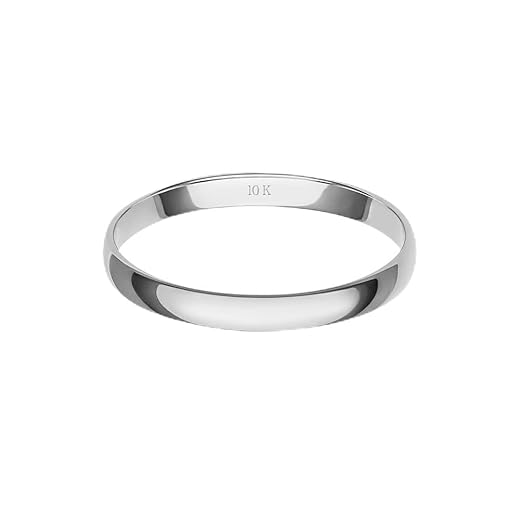

What is White Gold?
White gold might seem like an elusive treasure, but it’s simply a blend of yellow gold and other metals that give it that striking silvery color. At its core, white gold is composed of at least 75% pure gold (known as 18K white gold), while the remaining 25% usually consists of metals like palladium, nickel, or silver. This alloying process enhances the durability and strength of the gold, making it more suitable for everyday wear—especially important for an engagement ring that you plan to cherish for life.
Unique Characteristics
Unlike yellow gold, which exudes warmth with its distinct golden hues, white gold presents a modern and somewhat cooler aesthetic. Its color can vary slightly based on the alloys used: for example, adding nickel creates a brilliant white finish, whereas palladium offers a more muted, softer appearance. Regardless of the specific mixture, white gold remains a favorite among those looking for a contemporary twist on the traditional engagement ring.
How Does it Differ from Other Metals?
When comparing white gold to platinum, another popular choice, it’s essential to note that while both metals are durable, platinum is denser and typically more expensive. White gold may also require occasional re-plating with rhodium—a process that helps maintain its shine and protect against scratching. This maintenance, however, is minimal compared to the durability of some other metals.
Another aspect to consider is the emotional value attached to these metals. While platinum speaks of permanence, white gold resonates with a sense of adventure and modern sophistication. Think of it as the contemporary choice in a world where traditional paths are still celebrated but with a playful twist.
Jewelry in Practice
Imagine wearing a delicate white gold engagement ring adorned with sparkling diamonds. The cool, reflective surface complements the brilliance of the stones, creating a dazzling effect that turns heads. One popular option is the 14K White Gold Moissanite Engagement Ring, which showcases the beautiful combination of sparkling moissanite and elegant white gold, marrying modern aesthetics with classic design.
As you contemplate the qualities that make white gold an attractive option, it sets the stage for a deeper dive into the benefits and potential drawbacks. Understanding what it means to have a white gold engagement ring helps solidify your choice as you embark on this exciting journey toward expressing your love.
The Pros of White Gold Engagement Rings
Choosing a white gold engagement ring comes with a host of advantages that can make it a phenomenal choice for your meaningful piece of jewelry. Let’s explore why white gold has captured the hearts of so many couples, transforming it into a top contender for engagement rings.
Timeless Elegance
First and foremost, white gold offers an unparalleled aesthetic. The sleek, silvery hue of this metal brings a modern elegance that complements both classic and contemporary designs. Picture yourself wearing a stunning, intricately designed white gold ring adorned with sparkling diamonds. Its reflective surface enhances their brilliance, creating an eye-catching effect that often feels more luxurious than yellow gold.
Durability and Strength
One of the significant perks of white gold is its durability. Made from a combination of gold and other metals like nickel or palladium, white gold is designed to withstand daily wear and tear. Whether you’re an active person or lead a quieter lifestyle, the strength of white gold means your ring can handle life’s demands without easily scratching or bending. In fact:
Versatile Style
Versatility is another appealing factor. White gold pairs beautifully with various gemstones and settings, making it adaptable to different styles. Whether you prefer a vintage-inspired halo design or a sleek solitaire setting, white gold can complement any look. This flexibility allows you to choose a ring that genuinely reflects your unique personality.
Rhodium Plating
Many white gold rings come with rhodium plating, which adds an extra layer of shine while also providing a protective barrier against scratches and tarnishing. Rhodium not only enhances the luster but also contributes to the metal’s resistance to oxidation, meaning your ring stays beautiful longer with minimal effort.
Comfort and Lightweight
Lastly, white gold is comfortable to wear. The alloy’s composition often yields a lighter feel than heavier metals like platinum, making it easier for you to wear continuously without discomfort.
In summary, the unique blend of elegance, durability, versatility, and comfort makes white gold a crowd favorite in the engagement ring world. As you consider the benefits of white gold, it’s also important to weigh its potential downsides. This will give you a more balanced perspective as you embark on your quest for the perfect engagement ring.
The Cons of White Gold Engagement Rings
While white gold has its appeals, it also comes with some drawbacks. Understanding these cons is essential for making an informed decision that fits your lifestyle and preferences. Let’s delve into the potential downsides of white gold engagement rings, including maintenance needs and susceptibility to scratches and tarnishing over time.
Maintenance Requirements
One aspect that may surprise you is the need for regular maintenance. Many white gold rings are plated with rhodium to enhance their shine and offer some protection against scratching. However, over time, this rhodium plating can wear off, revealing the slightly warmer hue of the underlying gold alloy. This means that to keep your ring looking its best, you may need to have it re-plated every 1 to 2 years.
Susceptibility to Scratches
While white gold is more durable than gold on its own, it’s not immune to scratches. The alloy, despite being stronger than yellow gold, can still get surface scratches from everyday wear. If you lead an active lifestyle—say, playing sports or working with your hands—your ring may show signs of wear more quickly than you’d anticipate.
Potential for Allergies
If you have sensitive skin, the nickel often used in white gold alloys may raise concerns. Nickel can trigger allergic reactions in some people, leading to discomfort or dermal irritation. If you know you have a sensitivity to nickel, opting for a higher purity white gold like 18K (which generally contains less nickel) or choosing a palladium alloy alternative may be a better option.
Tarnishing Over Time
While white gold is less prone to tarnishing than silver, it’s still susceptible to dulling over time due to exposure to body oils, lotions, and cleaning products. Without proper care, you might find that your ring loses some of its initial luster, necessitating more frequent cleaning and polishing.
Albeit these drawbacks, many find the stunning look of white gold to outweigh its potential pitfalls. The key is to remain aware of its care requirements and choose wisely based on your lifestyle. As we move forward, it’s essential to consider how white gold stacks up against other metals in the engagement ring market, allowing you to make the best choice for your symbol of love and commitment.
Caring for Your White Gold Engagement Ring
Caring for your white gold engagement ring is essential to ensure it continues to shine brightly and remain a cherished symbol of your love. While its stunning aesthetic may catch your eye, maintaining the beauty of your ring requires some proactive measures. Here are practical tips to keep your white gold ring looking its best.
Regular Cleaning
To maintain the luster of your ring, regular cleaning is crucial. You can use a gentle solution of warm water and mild soap to soak your ring for about 20–30 minutes. After that, gently brush it with a soft toothbrush to remove any accumulated dirt or debris. Rinse thoroughly under lukewarm water, and finish by drying it carefully with a soft, lint-free cloth.
For added convenience, consider employing the CONNOISSEURS Jewelry Cleaning Kit. This kit is convenient for cleaning jewelry quickly and effectively, ensuring your ring sparkles without the need for professional help every time.
Routine Checks
It’s a good habit to check your ring regularly for loose stones or signs of wear. Take a moment to inspect the prongs holding the gemstones, especially after wearing it for special occasions. If you notice any stones that seem loose or if the setting looks damaged, take your ring to a jeweler immediately. Prompt repairs prevent further damage and help avoid losing a precious stone.
The Importance of Re-Plating
As mentioned earlier, white gold rings are often plated with rhodium to enhance their shine and durability. However, this plating can wear off over time, revealing the warmer tones of the underlying gold alloy. For maintaining a bright white appearance, consider scheduling a re-plating every 1 to 2 years. Most jewelers offer this service, and it’s worth the investment to keep your ring looking fresh and vibrant.
Avoiding Harsh Chemicals
Be mindful of exposing your ring to harsh chemicals found in household cleaners, swimming pools, and beauty products like lotions or perfumes. These substances can dull your ring and even damage the finish. Whenever possible, remove your ring when engaging in activities that involve chemicals or physical labor.
Storing Your Ring
When you’re not wearing your white gold engagement ring, store it safely. Consider keeping it in a soft pouch or a dedicated ring box to prevent scratches from other jewelry. It’s also wise to separate it from your other pieces to avoid unnecessary abrasion.
By integrating these simple care tips into your routine, you can ensure that your white gold engagement ring remains a stunning symbol of your love story. As you delve deeper into the world of fine metals, you’ll discover how white gold compares with other options, enabling you to forge a path to your perfect engagement ring.
White Gold vs. Other Metals: Making Your Choice
When it comes to choosing the perfect engagement ring, the metal selection profoundly impacts both aesthetics and practicality. White gold stands out in the crowd, but how does it measure up against other popular metals like yellow gold, rose gold, and platinum? Let’s dive into the comparisons to help you make an informed decision that reflects your unique style and lifestyle.
Yellow Gold: Timeless Tradition
Yellow gold, the classic choice for engagement rings, exudes warmth and nostalgia. Its rich hue lends itself to vintage styles and traditional settings. It’s also less prone to showing signs of wear compared to white gold, thanks to its thicker, naturally warm color. However, if your skin is quite cool-toned or you lean toward a modern aesthetic, you might find yellow gold less appealing.
Rose Gold: Romantic and Trendy
Rose gold has made a significant impact in recent years due to its romantic allure. The blush hue of rose gold is not only trendy but also unique, offering a standout appearance. It’s composed of gold mixed with copper, creating a durable metal that can withstand daily wear. If you have sensitivities to certain metals, rose gold is often more hypoallergenic than white gold blends that contain nickel.
Platinum: The Premium Choice
Platinum is the heavy hitter in the engagement ring market when it comes to prestige and durability. Known for its hypoallergenic properties, platinum is ideal for sensitive skin and retains its color without the need for plating. However, it is more expensive than white gold and can scratch more easily, requiring professional polishing to maintain its shine.
Weighing Your Options
When comparing these options, consider factors such as lifestyle, aesthetic preference, and budget.
Ultimately, your engagement ring should echo your style and lifestyle. Take the time to explore how each metal resonates with you, leading you to the perfect choice that signifies your love and commitment.
As you refine your selection, you can visualize how each metal enhances the beauty of your chosen stone, guiding you closer to that special piece.
Final Thoughts on White Gold Engagement Rings
As you wrap up your exploration of white gold engagement rings, it’s important to reflect on the insights shared throughout this article. From understanding what white gold is to weighing its pros and cons, you now have a clearer picture of how this stunning metal can symbolize your love and commitment.
Remember, the perfect ring is not just about aesthetics but also about what resonates with your personal style and lifestyle. So take your time, consider your options, and when you’re ready, choose a ring that feels like a true reflection of your unique love story. Happy ring shopping!
